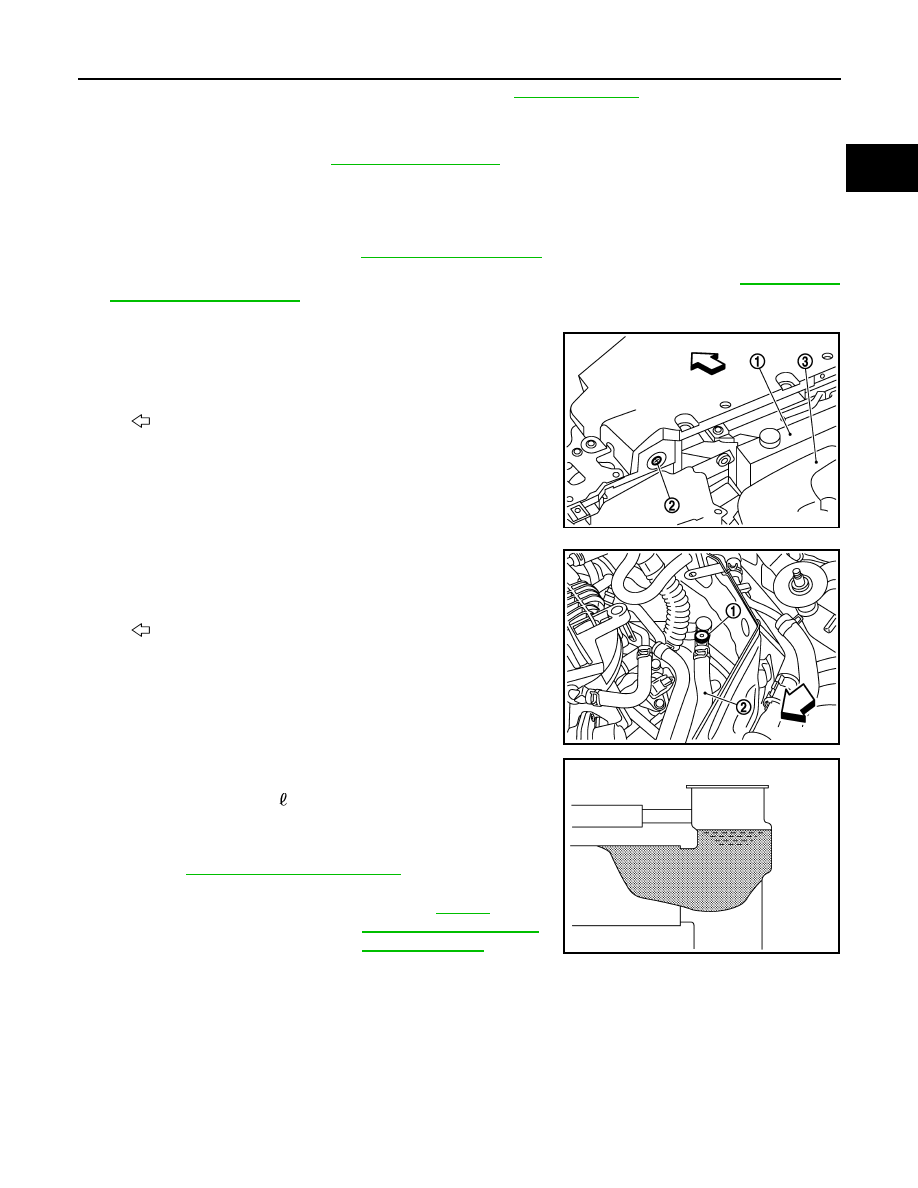Infiniti FX35, FX50 (S51). Manual - part 441

ENGINE COOLANT
CO-9
< PERIODIC MAINTENANCE >
[VQ35HR]
C
D
E
F
G
H
I
J
K
L
M
A
CO
N
P
O
If contaminated, flush the engine cooling system. Refer to
.
Refilling
INFOID:0000000005246356
1.
Remove engine cover. Refer to
.
2.
Install reservoir tank if removed, and radiator drain plug.
CAUTION:
Be sure to clean drain plug and install with new O-ring.
If water drain plugs on cylinder block are removed, close and tighten them. Refer to
3.
Check that each hose clamp is firmly tightened.
4.
Remove air relief plug (2) on radiator left side.
5.
Remove air relief plug (1) on heater hose. (models with air relief
plug on heater hose)
6.
Fill radiator, and reservoir tank if removed, to specified level.
• Pour engine coolant through engine coolant filler neck
slowly of less than 2 (2-1/8 US qt, 1-3/4 lmp qt) a minute
to allow air in system to escape.
• Use Genuine NISSAN Long Life Antifreeze/Coolant or an
equivalent mixed with water (distilled or demineralized).
Refer to
MA-12, "Fluids and Lubricants"
.
Tightening torque
: Refer to
1
: Reservoir tank
3
: Engine cover
: Vehicle front
JPBIA0260ZZ
2
: Heater hose
: Vehicle front
JPBIA0104ZZ
Engine coolant capacity
: Refer to
"Periodical Maintenanc
e Specification"
(With reservoir tank at
“MAX” level)
JPBIA0412ZZ